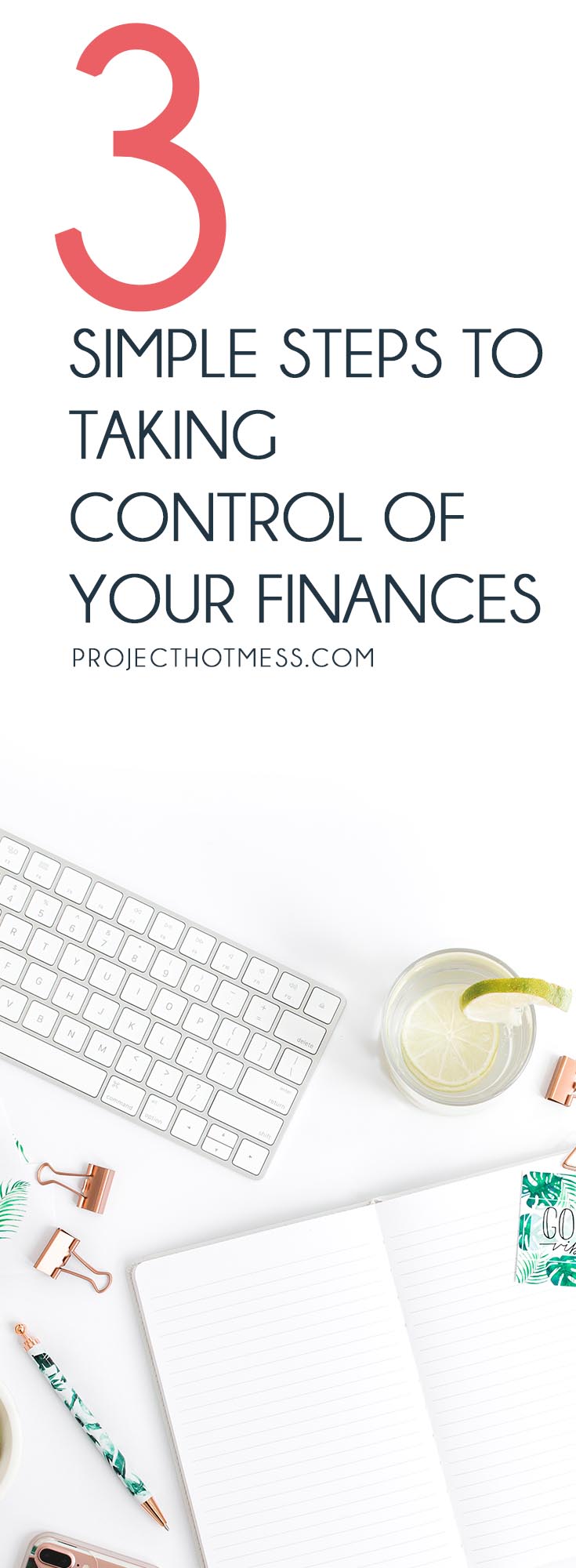3 Simple Steps To Taking Control of Your Finances
We fear what we don’t understand and can’t control. Hence why so many people fear and avoid their financial situation.
They go through their lives just ignoring their finances because they don’t understand them and therefore cannot control them. But I promise it’s not as difficult or scary as it may seem.
In fact, there are 3 very simple steps to taking control of your finances that you can do today.
One of the things we tend to do with our finances is that we overcomplicate the situation.
We think we need to create elaborate budgets or create super detailed balance sheets to know our finances.
That’s totally not the case.
The simpler you make things, the better, and the more likely you are to stick with it.
Try out these steps for taking control of your finances and see how simple it can really be.
Step 1 – Work Out What’s Coming In
Do you track how much money is coming into your account? Especially if you work on a fluctuating income. Or do you just wing it?
When you start to actually track the amount of money you have coming in, you start to respect and appreciate your income more.
This has been the biggest game changer for me personally when it came to taking control of my finances.
As someone who always had a fluctuating income, I never actually realized how much I was earning on a month-to-month basis.
And now that I have multiple income streams it’s essential that I track not only what is coming in but where it’s coming from.
You’d be amazed at how much a few dollars here and there can really add up.
Step 2 – Work Out What’s Going Out
Okay, so there’s two parts of this step. You need to work out what’s going out in terms of what bills and financial commitments you have. But then you also need to work out what is actually going out right now.
When you write out your outgoing expenses, be sure to include everything.
If you go out for coffee 5 times a week, include it! You don’t have to cut it, you just have to know it’s an expense.
If you have any less than 10 items on your expenses list, chances are you’re missing things.
Include rent, utilities, groceries, phone plan, health insurance, house insurance, car insurance, fuel, dinners, and lunches out, coffee budget, money to spend on clothes… literally, anything you can think of as a regular expense you’re likely to pay every pay period.
Now you need to work out where your money is actually going.
Most banks offer the ability to download your transactions via a spreadsheet.
If not that’s okay, you can do this yourself. What you need to do is go through all of your transactions for the last month or two and break them down into pay periods.
Then categorize every expense you have and then tally up your expenses at the end of each of the pay periods.
For example, if you get paid every Thursday, then track all of your expenses from Friday through to the following Thursday, categorize them into the categories you listed in the expenses and tally it all up.
How does it look?
Step 3 – Identify and Plug Any Leaky Buckets
Leaky buckets are financial areas where you spend a lot more money than you think you’re spending.
It’s like a bucket filled with water that just keeps going dry and you can’t figure out why.
Often these areas include things like groceries – maybe you’re going to the supermarket 5 times a week buying bits and pieces here and there that end up costing you a fortune.
You can plug this bucket by doing things like meal planning and only shopping once a week.
Or maybe you estimated you only spend $50 a week on dinners or lunches out but you actually spend on average $100.
If you’re not tracking your spending these things can add up quickly without realizing it.
Use the comparison between your actual spending and your predicted spending to help you identify these leaky buckets and come up with ways to ‘plug’ them.
Seems pretty simple and straightforward? That’s because it is. Taking control of your finances doesn’t have to be scary.
And if you’ve found you’ve got a lot more leaky buckets than you thought you would then that’s okay too.
Because you’ve identified them now and can fix them, rather than let it build up and become a major issue.
Budgeting doesn’t have to be for people on low incomes or people who can’t manage their money.
Billion-dollar, highly successful businesses have budgets and track their income and expenses.
Treat your income the same way. Keep track of it and plug the leaks. So simple.








